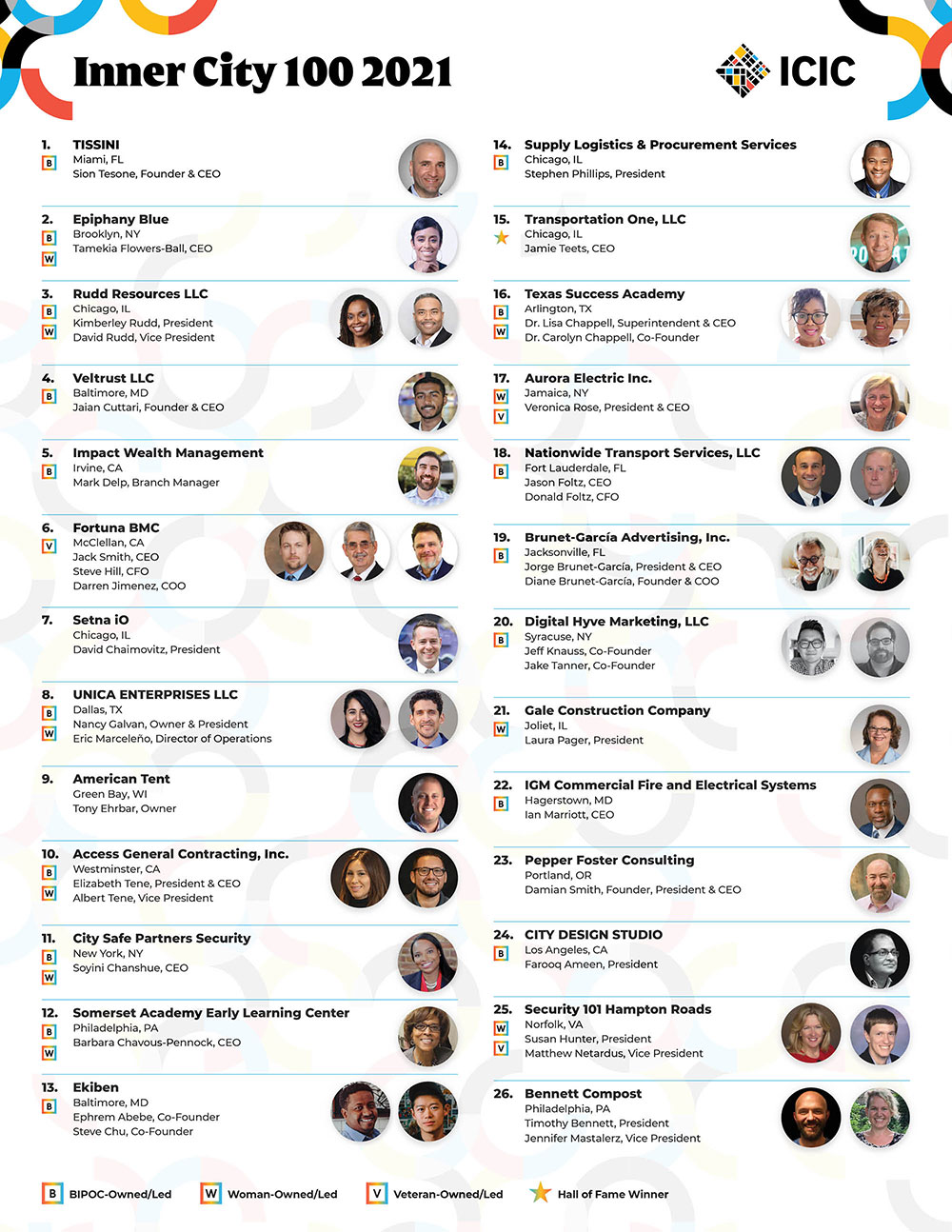Program Update
Inner City 100
Since 1999, ICIC has identified and celebrated the 100 fastest-growing businesses in under-resourced communities through the Inner City 100 (IC100) award. In that time, we have had the pleasure of learning about and highlighting more than 1,000 incredible business leaders and their companies from across the U.S. who continuously inspire us. These firms have been engines of job growth and a healthy, inclusive economy in these incredibly challenging times. They have also been actively engaged in strengthening their communities by donating their time and resources to local organizations and charities.
We’re excited to expand upon and further diversify this impressive group of business leaders by celebrating and promoting our 2021 Inner City 100 (IC100) winners that represent a vast range of industries, including construction, advertising, and retail.
Achieving multi-year financial growth is a significant accomplishment. IC100’s class of 2021 sustained their momentum amid the unprecedented challenges faced during the pandemic to greatly expand their respective businesses’ revenue – a tremendous milestone we’re proud to celebrate!
From 2016 to 2020, the 2021 Inner City 100 companies averaged 216% revenue growth and created 3,899 total jobs. Of these 100 winners, 32 are woman-owned/led, and 60 are BIPOC-owned/led, which is a record-high number in the program’s 23-year history.
2021 Impact Snapshot: Inner City 100

Average company age

Cities represented

States represented

Industries represented

Woman-owned/led

BIPOC-owned/led

Veteran-owned/ led

First-time winner

Hall of fame (5+)

Average 4-year revenue growth

Average 2016 revenue

Average 2020 revenue

Total jobs created

Total employed by IC100 winners in 2020
Meet the 2021 Inner City 100
IC100 Methodology
Recognizing that concentrated poverty exists within metropolitan areas outside of big cities (and that poverty overall is suburbanizing), ICIC has revised its definition of an inner city (or under-resourced area) to encompass large areas of concentrated poverty in suburbs and smaller central cities as well as the large cities on which it has historically focused. The new inner city definition that ICIC has developed includes large low-income, high-poverty areas located in the urban and suburban parts of all but the smallest metropolitan areas. Every year, ICIC identifies, ranks, and awards the 100 fastest-growing businesses located in America’s under-resourced communities. In 2021, companies were selected and ranked by revenue growth over the four-year period between 2016 and 2020.
